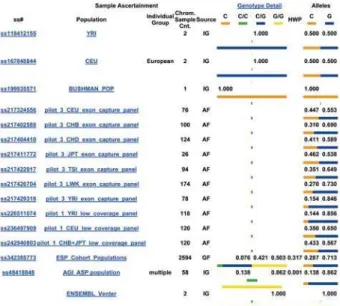Guest Editorial
http://dx.doi.org/10.1590/1678-77572013ed003
Alexandre R. VIEIRA
11- DDS, MSc, PhD, Department of Oral Biology, School of Dental Medicine, University of Pittsburgh, Pittisburgh, USA.
Corresponding address: Alexandre R. Vieira, 614 - Salk Hall - 3501 Terrace Street - Pittsburgh, PA, USA. e-mail: arv11@dental.pitt.edu
Tooth agenesis is the congenital lack of one or more of the deciduous or permanent teeth. Oligodontia is the agenesis of six or more permanent teeth (excluding third molars), whereas absence of less than six teeth is referred to as hypodontia. Anodontia refers to the absence of all deciduous and permanent teeth.
Tooth agenesis occurs more frequently among a few molars), with 10% to 25% of the population affected. Familial tooth agenesis is transmitted as an autosomal-dominant, autosomal-recessive, or X-linked condition, but can also show no clear segregation pattern5. Affected
with regard to the location, symmetry, and number of teeth involved. Residual teeth can vary in size, shape, or rate of development. The permanent dentition is more affected than the primary dentition3.
In this issue of the Journal of Applied Oral Science, Wang, et al.8 (2013) report a study that combines a
case-control analysis of a PAX9 variant and sporadic isolated
tooth agenesis, and a case of anodontia. The case-control analysis probably suffers from low statistical power. The effects of PAX9 in sporadic cases of tooth agenesis are
probably small and may be dependent of interaction with other genes, such as MSX17. Effects of PAX9 have been
detected when analysis included cases with preferential third molar agenesis1. One of the PAX9 variants studied,
rs4904210, is a missense mutation (A240P) that is not considered to have any functional consequences since is highly prevalent in several populations (Figure 1).
The case of anodontia however rings more excitement to this report. The authors failed to find etiological mutations in four genes: PAX9, MSX1, AXIN2, and EDA.
! step, although no reports exist linking these genes with isolated anodontia, even when the whole PAX9 gene is deleted from one of the chromosomes6" #
genes when mutated cause autosomal dominant forms of oligodontia (with at least one known MSX1 recessive
form)6. EDA has been linked to isolated X-linked recessive
oligodontia, and whereas mutations in this gene cause ectodermal dysplasia, which can lead to anodontia or very severe oligodontia, sequencing EDA in a female case is not
! chance of skewed X chromosome inactivation.
A very appealing approach to be used for identifying the causal mutation of the anodontia case presented by Wang, et al.8 (2013) would be whole exome sequencing2.
This approach has been used in other craniofacial conditions, such as craniosynostosis4. Using this approach,
the authors will likely unveil the mutation causing the sporadic anodontia in the case by testing only one or two DNA samples of good quality for a current cost of less than US$1,000.
References
1- Bianch FJ, Oliveira TF, Saito CB, Peres RC, Line SR. Association between polymorphism in the promoter region (G/C-915) of PAX9 gene and third molar agenesis. J Appl Oral Sci. 2007;15:382-6. 2- Choi, Scholl UI, Ji W, Liu T, Tikhonova IR, Zumbo P, et al. Genetic diagnosis by whole exome capture and massively parallel DNA sequencing. Proc Natl Acad Sci U.S.A. 2009;106:19096-101. 3- D’Souza RN, Kapadia H, Vieira AR. Teeth. In: Stevenson RE, Hall JG. Human malformations and related anomalies. New York: Oxford University Press; 2009. p.425-65.
4- Sharma VP, Fenwick AL, Brockop MS, McGowan SJ, Goos JA, Hoogeboom AJ, et al. Mutations in TCF12, encoding a basic helix-loop-helix partner of TWIST1, are a frequent cause of coronal craniosynostosis. Nat Genet. 2013;45:304-7.
5- Vieira AR. Oral clefts and syndromic forms of tooth agenesis as models for genetics of isolated tooth agenesis. J Dent Res. 2003;82:162-5.
6- Vieira AR. Genetics of congenital tooth agenesis. eLS. Chichester: John Wiley & Sons; 2012. doi: 10.1002/9780470015902. a0023576.
7- Vieira AR, Meira R, Modesto A, Murray JC. MSX1, PAX9, and TGFA contribute to tooth agenesis in humans. J Dent Res. 2004;83:723-7.
8- Wang J, Xu Y, Chen J, Wang F, Huang R, Wu S, et al. PAX9 polymorphism and susceptibility to sporadic non-syndromic severe anodontia: a case-control study in southwest China. J Appl Oral Sci. 2013;21:256-64.
Source: NCBI - National Center for Biotechnology Information. dbSNP Short Genetic Variations. PAX9: rs4904210. Bethesda: NCBI; 2013 [cited 2013 June 20]. Available from:http://wwwncbi. nlm.nih.gov/projects/SNPsnp_ref cgi?rs=4904210
